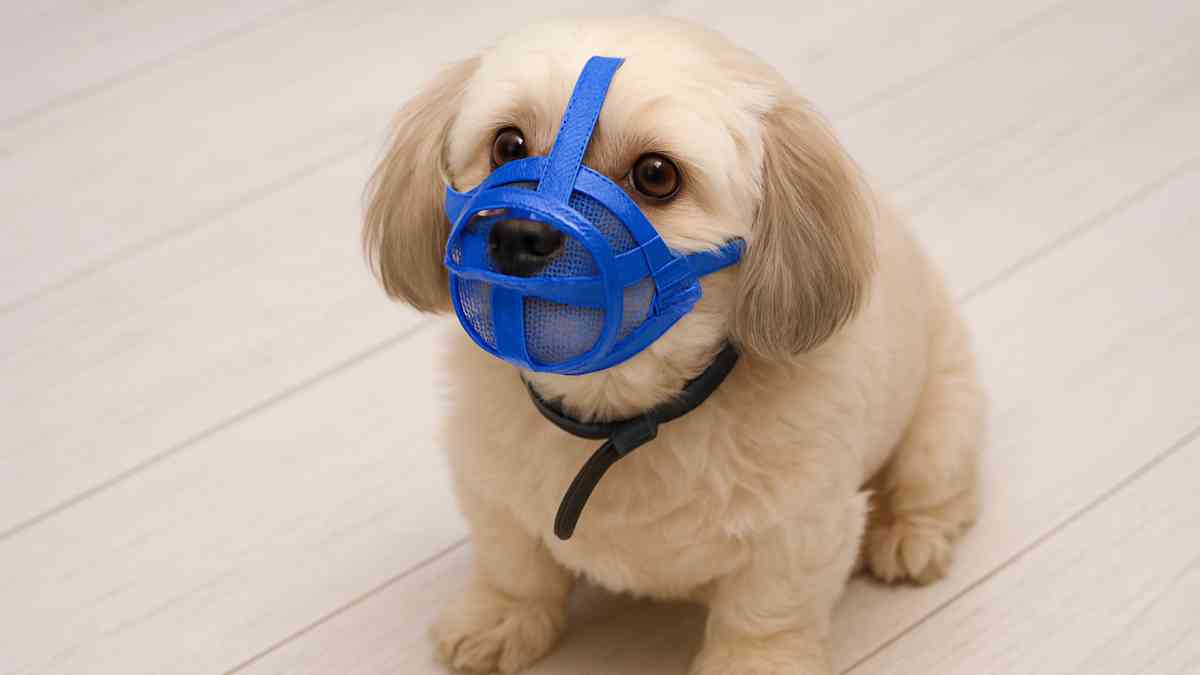Muzzle for Shih Tzu Dogs: A Gentle Guide for Caring Owners

When most people picture a Shih Tzu, they think of a small, charming companion curled up on a cozy pillow, radiating calm and sweetness. And most of the time, that’s exactly who they are. But even the gentlest dog can become nervous or overwhelmed in certain situations—at the groomer, during a vet visit, or when surrounded by too much noise or activity. In these moments, having the right tools to ensure safety and comfort for both the dog and the people around them matters. One of those tools, used correctly, is a muzzle for a Shih Tzu dog.
Let’s be clear: a muzzle isn’t a punishment. When introduced kindly and fitted properly, it becomes a tool of protection and reassurance. This guide will walk you through everything you need to know about choosing, using, and understanding muzzles for Shih Tzu dogs, with a focus on empathy, safety, and respect for your dog’s needs.
What Is a Muzzle and Why Is It Used?
A dog muzzle for Shih Tzu is a wearable device placed over the snout to prevent biting, chewing, or in some cases, excessive barking or eating harmful items. It does not hurt or trap your dog when used the right way. Many muzzles today are specifically designed for short-snouted breeds like the Shih Tzu, offering comfort and breathability while providing that extra layer of control and security in uncertain settings.
Some people assume only aggressive dogs need muzzles. That’s a myth. In reality, even the most loving Shih Tzu can become frightened, especially during stressful experiences like nail clipping, injections, or unfamiliar grooming sessions. A properly used muzzle helps create a calm boundary and prevents accidental nipping without escalating your dog’s stress.
Why Shih Tzus Need Special Muzzles
Shih Tzus are brachycephalic dogs, meaning they have short, flat faces and compact snouts. This distinctive facial structure not only makes them look adorable but also requires special attention when choosing a muzzle. Traditional muzzles made for long-snouted breeds don’t fit Shih Tzus. If forced onto their faces, they can cause breathing difficulties or even panic.
That’s why pet gear manufacturers now offer muzzles specifically designed for flat-faced dogs. These models feature broader shapes, breathable mesh or silicone materials, and enough room for panting and drinking. They’re not restrictive—they’re custom-fit tools that consider the unique needs of dogs like yours.
When Should You Use a Muzzle for Your Shih Tzu?
The idea is not to use a muzzle constantly. Instead, it’s about intentional, situational use. Here are some practical examples of when a muzzle for Shih Tzu dog can be helpful:
During grooming: Many Shih Tzus don’t love clippers or nail grinders. A muzzle ensures the groomer’s hands are safe and reduces the dog’s ability to react negatively if startled.
At the vet: Some dogs become reactive during checkups, especially if they associate the clinic with pain or discomfort. A muzzle keeps everyone secure while the vet does their job quickly and calmly.
When introducing a new environment: Moving to a new home, meeting unfamiliar dogs, or being around loud machinery might trigger anxiety or fear-based reactions. A muzzle acts as a temporary safety net.
To prevent scavenging: Some Shih Tzus have a habit of eating random things on walks. A properly ventilated muzzle can block access to dangerous items without restricting breathing.
When You Should Avoid Using a Muzzle
There are also times when a muzzle is not appropriate. You should never use one as a punishment or leave it on for long durations. Dogs need to pant to regulate their temperature, and wearing a muzzle for too long without supervision can lead to overheating or distress.
Avoid using a muzzle to solve underlying behavioral problems like aggression or anxiety. Instead, work with a behaviorist or trainer. The muzzle should be seen as a short-term measure to manage specific situations safely—not a long-term solution.
Types of Muzzles That Work Best for Shih Tzus
Since Shih Tzus need specialized care, you should only consider muzzles designed for flat-faced breeds. Here are a few top choices:
Soft Silicone Muzzles: These are flexible, lightweight, and breathable. They’re ideal for short grooming sessions or vet visits. Some designs allow your dog to pant and drink while wearing them, which is essential for comfort.
Mesh & Nylon Muzzles: Lightweight and comfortable, these allow for good airflow and are often used during training sessions or short trips.
Handmade Leather Muzzles: Designed with both style and function in mind, they offer a custom fit and more durability. Make sure they have ventilation holes and aren’t too snug.
Each of these has its pros and cons. What matters most is the fit—it should cover your Shih Tzu’s mouth securely without causing discomfort or restricting breathing.
How to Measure Your Shih Tzu for the Right Muzzle
A good fit starts with good measurement. Here’s how to size your dog correctly:
Snout circumference: Wrap a soft measuring tape around the widest part of your dog’s snout (near the base).
Snout length: Measure from the tip of the nose to just below the eyes.
Head circumference: Some muzzles come with straps that go behind the head or ears—measure accordingly.
Always allow some extra space for panting, and consult the manufacturer’s guides to compare your dog’s measurements with their size chart.
Training Your Shih Tzu to Wear a Muzzle Gently
For your Shih Tzu to accept a muzzle, you need to introduce it slowly and positively. Never surprise them with it or force it on them. Here’s a simple approach:
Step 1: Let them sniff it. Show the muzzle without putting it on. Give a treat every time they interact with it.
Step 2: Touch the muzzle to their face. Again, reward and praise.
Step 3: Slip it on for a second or two. Build gradually over several days.
Step 4: Extend wearing time. Slowly work up to a few minutes, always ending on a positive note.
Patience is essential. The goal is to create positive associations, so your dog feels safe and secure when wearing it.
Benefits of Using a Muzzle for Shih Tzu Dogs
When used responsibly, a muzzle becomes a valuable safety tool, not a source of discomfort. Some of the key benefits include:
Protecting groomers, vets, and strangers from accidental bites when your dog is stressed.
Preventing your Shih Tzu from eating harmful items like stones, plastic, or spoiled food.
Reducing your own anxiety when taking your dog to public places or during high-stress situations.
Helping with controlled re-socialization, especially if your dog is recovering from trauma or reactivity issues.
The right muzzle promotes trust, not fear—both for you and your pet.
Mistakes to Avoid With Muzzles
Many owners unknowingly misuse muzzles. Here are some pitfalls to steer clear of:
Buying the wrong size or type: Ill-fitting muzzles can cause chafing or panic.
Skipping training: Forcing a muzzle leads to resistance and anxiety.
Leaving it on too long: Muzzles are meant for short-term, supervised use only.
Using it as punishment: This damages trust and creates negative associations.
Failing to check the fit regularly: Your dog’s size and comfort may change over time.
Always prioritize your dog’s well-being when using any kind of restraint tool.
Conclusion
Using a muzzle for Shih Tzu dog isn’t about control—it’s about care. It’s a thoughtful way to create calm and safety in moments that could otherwise be stressful. Whether it’s a vet visit, grooming session, or walk through a busy park, the right muzzle provides a bridge between your intentions and your dog’s comfort.
What makes the difference isn’t just the muzzle itself—it’s how you introduce it, how you use it, and how you ensure it feels safe for your dog. With kindness, patience, and the right fit, a muzzle becomes part of your toolkit, not a source of fear, but a sign of love.
Keep your Shih Tzu safe and calm—choose the right muzzle today.




